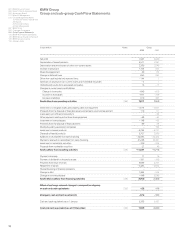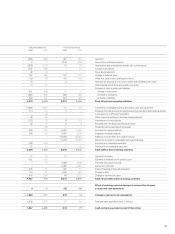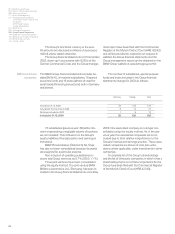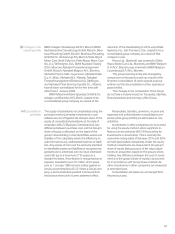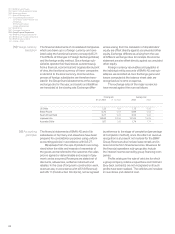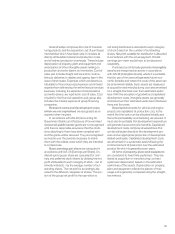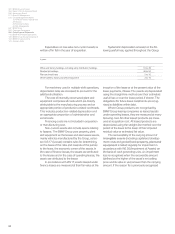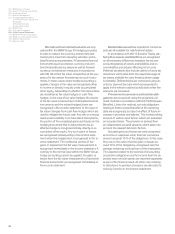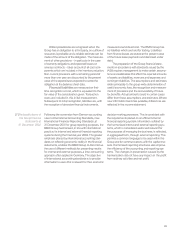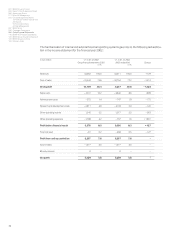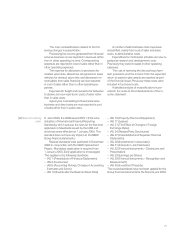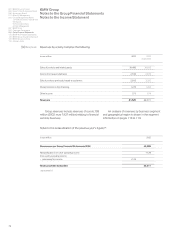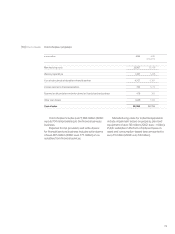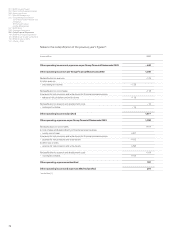BMW 2003 Annual Report Download - page 69
Download and view the complete annual report
Please find page 69 of the 2003 BMW annual report below. You can navigate through the pages in the report by either clicking on the pages listed below, or by using the keyword search tool below to find specific information within the annual report.68
001 BMW Group in figures
004 Report of the Supervisory Board
008 Supervisory Board
011 Board of Management
012 Group Management Report
12 A Review of the Financial Year
29 Outlook
30 Financial Analysis
44 Risk Management
047 BMW Stock
050 Corporate Governance
054 Group Financial Statements
118 BMW AG Principal Subsidiaries
120 BMW Group10-year Comparison
122 BMW Group Locations
124 Glossary, Index
Derivative financial instruments are only
used within the BMW Group for hedging purposes
in order to reduce the currency, interest rate and
market price risks from operating activities and re-
lated financing requirements. All derivative financial
instruments (such as interest, currency and com-
bined interest/currency swaps as well as forward
currency contracts) are measured in accordance
with IAS 39 at their fair value, irrespective of the pur-
pose of or the reason for entering into such instru-
ments. In those cases where hedge accounting is
applied, changes in fair value are recognised either
in income or directly in equity under accumulated
other equity, depending on whether the transactions
are classified as fair value hedges or cash flow
hedges. In the case of fair value hedges, the results
of the fair value measurement of derivative financial
instruments and the related hedged items are
recognised in the income statement. In the case of
fair value changes from cash flow hedges which are
used to mitigate the future cash flow risk on a recog-
nised asset or liability or on forecasted transactions,
the portion of the unrealised gains and losses on the
hedging instrument that is determined to be an
effective hedge is recognised initially directly in ac-
cumulated other equity. Any such gains or losses
are recognised subsequently in the income state-
ment when the hedged item is recognised in the in-
come statement. The ineffective portion of the
gains or losses from the fair value measurement is
recognised immediately in the income statement. If,
contrary to the normal case within the BMW Group,
hedge accounting cannot be applied, the gains or
losses from the fair value measurement of derivative
financial instruments are recognised immediately in
the income statement.
Marketable securities reported in current as-
sets are all available-for-sale financial assets.
In accordance with IAS 12 (Income Taxes), de-
ferred tax assets and liabilities are recognised
on all temporary differences between the tax and
accounting bases of assets and liabilities and on
consolidation procedures affecting net income.
Deferred tax assets also include claims to future tax
reductions which arise from the expected usage of
tax losses available for carry forward, where usage
is probable. Deferred taxes are computed using en-
acted or planned tax rates which are expected to
apply in the relevant national jurisdictions when the
amounts are recovered.
Provisions for pensions and similar obli-
gations are recognised using the projected unit
credit method in accordance with IAS 19 (Employee
Benefits). Under this method, not only obligations
relating to known vested benefits at the reporting
date are recognised, but also the effect of future in-
creases in pensions and salaries. This involves taking
account of various input factors which are evaluated
on a prudent basis. The provision is derived from
an independent actuarial valuation which takes into
account the relevant biometric factors.
Actuarial gains and losses are only recognised
as income or expenses when their net cumulative
amount exceeds 10% of the obligations. In this case
they are, to the extent that the gains or losses ex-
ceed 10% of the obligations, recognised over the
average remaining working lives of the employees.
The expense related to the reversal of discounting
on pension obligations and the income from the ex-
pected return on plan assets are reported separately
as part of the financial result. All other costs relating
to allocations to pension provisions are allocated to
costs by function in the income statement.


